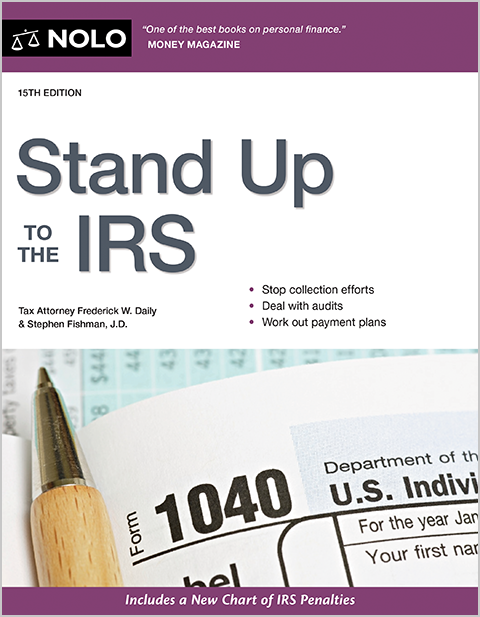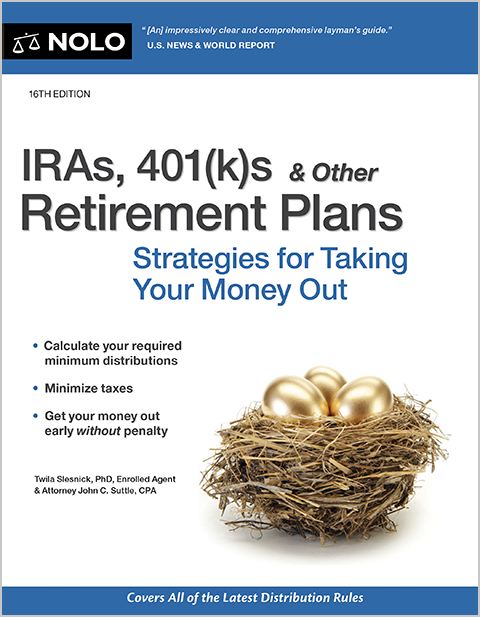Here are the popular tax deductions (write-offs) for individuals for tax year 2025.
A tax "deduction" reduces the income you're taxed on (so you might have a lower tax bill), while a tax "credit" directly lowers your tax bill. Most of the top personal tax deductions for individuals can only be taken if you itemize your personal deductions on your return instead of taking the standard deduction.
Today, few taxpayers itemize—only about 11%—because the standard deduction was almost doubled starting in 2018. For 2025 (the taxes you file in 2026), the standard deduction amounts are $15,750 for singles or marrieds filing separately and $34,700 for marrieds filing jointly. You should itemize only if your personal itemized deductions exceed your standard deduction.
In this article, you'll learn more about common tax deductions (tax breaks) and how to claim them.
- Common Tax Deduction #1: Mortgage Interest
- Common Tax Deduction #2: State and Local Taxes
- Common Tax Deduction #3: Charitable Donations
- Common Tax Deduction #4: Medical Expenses and Health Savings Accounts (HSA)
- Common Tax Deduction #5: 401(k) and IRA Contributions
- Common Tax Deduction #6: Student Loan Interest
- Common Tax Deduction #7: Education Expenses
- Is It Worth It to Itemize Tax Deductions?
- What About Tax Credits vs. Tax Deductions?
- Getting Help With Tax Deductions
Common Tax Deduction #1: Mortgage Interest
If you itemize, you can deduct the mortgage interest (not the principal) that you pay on a loan secured by your primary residence or a second home. To claim the deduction, you must be obligated to pay the debt, and you must actually make the payments, which are reported to the IRS by your lender.
For first and second homes purchased before December 15, 2017, interest on home loan acquisition debt up to $1 million is deductible. For homes purchased after December 15, 2017, homeowners are allowed to deduct the interest on only up to $750,000 in acquisition debt for a first and second home.
But the reduction doesn't apply to refinancings of homes purchased before December 15, 2017, as long as the new loan doesn't exceed the amount of the mortgage being refinanced.
Common Tax Deduction #2: State and Local Taxes
If you itemize, you may deduct a maximum of $10,000 in state and local taxes each year through 2024. For 2025, the itemized deduction for state and local taxes is limited to $40,000 per year ($40,400 for 2026), but is phased down to $10,000 for taxpayers who earn over $500,000.
The deduction limit increases by 1% each year through 2029, and is scheduled to revert to $10,000 in 2030.
Common Tax Deduction #3: Charitable Donations
If you itemize, you can deduct any cash or noncash contributions you make to a qualified nonprofit organization. You're supposed to have documentation for any cash contribution, including contributions under $250.
For all noncash (property) contributions and cash contributions over $250, you must have a receipt or acknowledgment from the nonprofit organization. For noncash (property) contributions over $500, you have to file an extra form with your tax return, Form 8283, Noncash Charitable Contributions.
Beginning in 2026, single taxpayers can deduct up to $1,000 per year ($2,000 for married individuals filing jointly) in cash charitable contributions without itemizing. This deduction applies to direct cash gifts to qualifying 501(c)(3) charities, not donor-advised funds or private foundations.
Common Tax Deduction #4: Medical Expenses and Health Savings Accounts (HSA)
If you itemize, you can deduct the amount of your medical and dental expenses that exceed 7.5% of your adjusted gross income. So, if your AGI is $100,000, you can deduct your medical expenses only if, and to the extent, they exceed $7,500. For example, if you have $10,000 in medical expenses you can deduct only $2,500. Eligible medical expenses include both health insurance premiums and out-of-pocket expenses not covered by insurance for both you and your dependents.
If you have a qualified Health Savings Account (HSA), you can deduct your contributions to the account, and you don't have to pay tax on any interest you earn from the account. For 2025, the contribution limit is $4,300 for singles and $8,550 for families. If you're over 55, you can contribute an additional $1,000.
To establish an HSA account, you must have a high-deductible health plan that qualifies under the HSA rules. You can use money in your HSA account to pay almost any kind of health-related expense.
Common Tax Deduction #5: 401(k) and IRA Contributions
If your employer offers a 401(k), it pays to maximize your contributions, especially if your employer matches them. The maximum contribution is $23,500 for 2025. If you are 50 or older, you can contribute an extra amount. Under SECURE 2.0, a higher catch-up contribution limit applies for employees aged 60, 61, 62, and 63. For 2025, this higher catch-up contribution limit is $11,250.
For IRAs, you can contribute $7,000 in 2025 and deduct that amount from your income—but this deduction is phased out if your income is over certain limits and you and your spouse have a workplace retirement plan. If you are 50 or older, you can contribute an extra $1,000.
Common Tax Deduction #6: Student Loan Interest
You can deduct up to $2,500 in student loan interest payments per year for the lifetime of the loan (income limits apply). This is an "above the line" deduction that you can take without itemizing your personal deductions. So, all taxpayers who qualify may take it.
Read IRS Publication 970 to get more information.
Common Tax Deduction #7: Education Expenses
You can set up a Coverdell education savings account and contribute up to $2,000 per year (with phase-outs for higher-income people). These contribution amounts were made permanent in 2013. The amount you contribute isn't deductible, but distributions from the account for payment of tuition are tax-free.
You can also set up a state-sponsored college savings plan, known as a "Section 529 plan," which allows tax-free withdrawals for qualified college expenses. In addition, up to $10,000 can be withdrawn from a 529 plan each year to pay for elementary, middle, and secondary school tuition—a boon to parents who send their children to private schools.
Is It Worth It to Itemize Tax Deductions?
Whether you should itemize deductions typically boils down to whether your eligible itemized deductions exceed the value of your standard deduction. If you don't have many deductible expenses, you're probably better off claiming the standard deduction.
Keep in mind that even if you don't itemize, you might be able to claim some above-the-line deductions, which will reduce the income subject to federal taxation.
What About Tax Credits vs. Tax Deductions?
Again, a tax credit gives you a dollar-for-dollar reduction in the amount of taxes you owe. A few of the most popular tax credits include the child tax credit, the adoption tax credit, and the earned income tax credit.
Getting Help With Tax Deductions
Hiring the right tax professional is important because getting good tax help can translate into more money in your pocket. To learn more about tax deductions and credits, talk to a tax lawyer or other tax adviser.
Talk to a Tax Attorney
Need a lawyer? Start here.
How it Works
- Briefly tell us about your case
- Provide your contact information
- Choose attorneys to contact you
- Common Tax Deduction #1: Mortgage Interest
- Common Tax Deduction #2: State and Local Taxes
- Common Tax Deduction #3: Charitable Donations
- Common Tax Deduction #4: Medical Expenses and Health Savings Accounts (HSA)
- Common Tax Deduction #5: 401(k) and IRA Contributions
- Common Tax Deduction #6: Student Loan Interest
- Common Tax Deduction #7: Education Expenses
- Is It Worth It to Itemize Tax Deductions?
- What About Tax Credits vs. Tax Deductions?
- Getting Help With Tax Deductions
- Briefly tell us about your case
- Provide your contact information
- Choose attorneys to contact you

